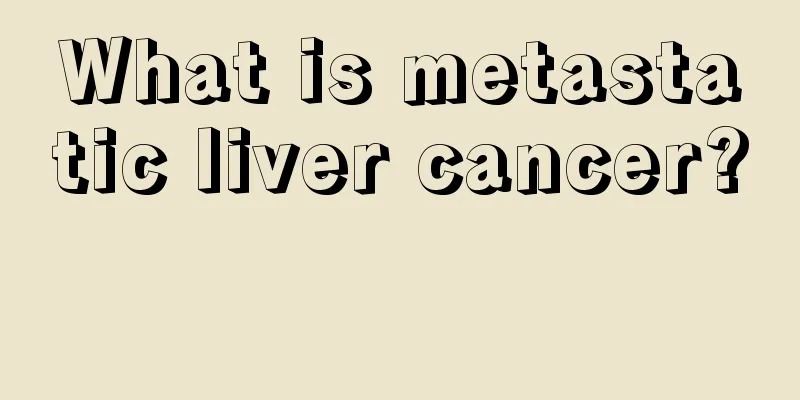What method is suitable for treating hamartoma

|
Among tumor diseases, the existence of hamartoma is unique. It is a tumor-like deformity. The root cause is the enhanced activity of lipoma factor. If it is not treated in time, some difficult-to-cure complications will occur. Here I will introduce to you how to quickly treat hamartoma: Hamartoma is a substantial space-occupying lesion, a type of lipoma, composed of thick-walled blood vessels, smooth muscle and mature adipose tissue, and can occur singly or multiple times. Usually, B-ultrasound and CT examinations have a high positioning and qualitative diagnosis rate for hamartomas. Although hamartomas are benign, they must be surgically removed. Only the pathological diagnosis after surgery is accurate. Although it does not metastasize in the near future, it may turn into cancer and is constantly destroying normal organ tissues. Having an extra abnormal thing in the body is also a psychological burden, so surgery is necessary. Renal hamartoma, also known as renal angiomyolipoma, is a benign tumor composed of abnormally proliferating blood vessels, smooth muscles and adipose tissue in different proportions. The disease can occur not only in the kidneys, but also in the brain, eyes, heart, lungs, bones and other parts. The disease is very harmful to the patient's body, so it needs to be treated as soon as possible after diagnosis. What should I do if I have a hamartoma? 1. Observation: Oesterling believed that tumors <4 cm can be left untreated, but close follow-up is required. Johns Hopkins reported a group of 35 cases, some of which did not continue to grow for many years. Steiner advocated that patients <4 cm should be followed up once a year even if they are asymptomatic; patients >4 cm should be followed up once every six months if they are asymptomatic or have mild symptoms. 2. Embolization: Arterial embolization should first be considered in cases of bleeding. According to experience, the volume of the tumor does not decrease after embolization, but the bleeding can be stopped. Superselective renal artery branch embolization is often used to protect some renal function. 3. Nephron-sparing surgery: Tumors <5cm can be enucleated, especially those at the edge of the kidney. However, some tumors have unclear capsules, irregular shapes, and unclear interfaces, making enucleation unsafe. In this case, partial nephrectomy can be performed. 4. Surgical treatment: The procedure of preserving renal tissue, which we call partial nephrectomy, can not only completely remove the tumor, but also preserve renal tissue and protect renal function to the maximum extent. It has a very good long-term effect and is very meaningful for the treatment of renal hamartoma (including cases of partial rupture and bleeding). Partial nephrectomy is divided into open surgery and laparoscopic surgery. According to the current medical level, laparoscopic surgery is recommended as the first choice. It not only has less trauma and completely removes the tumor, but also can retain pathology to confirm the nature of the tumor. In recent years, laparoscopic surgery has gradually become the preferred method for the treatment of renal hamartoma with its unique advantages such as less trauma, fast wound healing, short hospitalization time, less bleeding and beautiful incision. 5. Kidney transplantation or hemodialysis: Only applicable to patients who must undergo bilateral nephrectomy due to bilateral lesions leading to renal failure or tumor rupture and bleeding. 6. Interventional embolization: Generally speaking, interventional embolization is simple and safe, but some scholars believe that this treatment is not thorough and cannot guarantee complete blockage of the blood supply to the hamartoma, so there is a possibility of secondary embolization or conversion to surgical treatment. However, it is a good first aid method for ruptured bleeding. Unilateral renal angiolipoma is a benign lesion with a good prognosis. For patients with bilateral or multiple lesions and renal insufficiency, their quality of life will still be affected despite conservative treatment. For a few cases where multiple organs are invaded, such as lymph nodes, brain, heart, or even tumor thrombi invade blood vessels, the prognosis depends on the condition of the invaded organs. |
<<: What is the best treatment for hamartoma
>>: How to quickly treat hamartoma
Recommend
What is the best way to reduce scars?
The presence of scars actually has a great impact...
How to wash off the rust on the pot
In life, everyone has cooked with an iron pot. If...
How to treat chronic nephritis proteinuria with traditional Chinese medicine
When it comes to proteinuria, everyone will say t...
B vitamin lozenges
Vitamin B is the most important element for the b...
What toothpaste can cure toothache
Toothache is a very common phenomenon in our dail...
Complete recipes for Cordyceps sinensis wine. Taboos of Cordyceps sinensis wine
Cordyceps sinensis is a health product with very ...
Can regular facial mask application delay aging?
When it comes to aging, it is something that no w...
How to clean up hair that has fallen on the ground_Tips for removing hair from the ground
When cleaning the room, if you find a lot of hair...
What are the symptoms of lack of sleep? People who often stay up late must know
In recent years, with the increasing pressure of ...
What's the matter with the hot temper?
The so-called "hot temper" means that a...
What is hepatoma? A tumor disease
What kind of disease is hepatoma? Hepatoma is a v...
What is the reason for general fatigue?
Some friends will experience physical fatigue in ...
How to check and diagnose the early symptoms of laryngeal cancer
Laryngeal cancer is a serious and malignant disea...
What are the most typical symptoms of lung cancer? 4 most typical symptoms of lung cancer
Pericardial effusion. Cancer invasion of the vagu...
What is the reason for the eyes to twitch
When the eyelids twitch, many people have superst...









